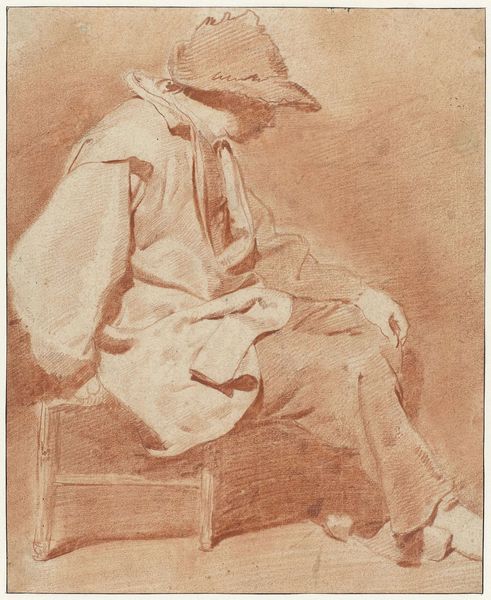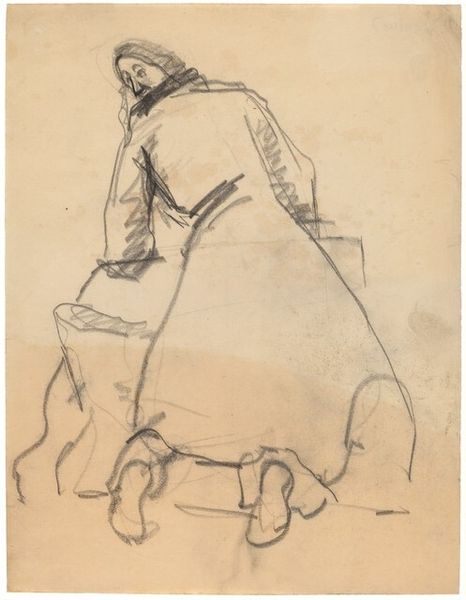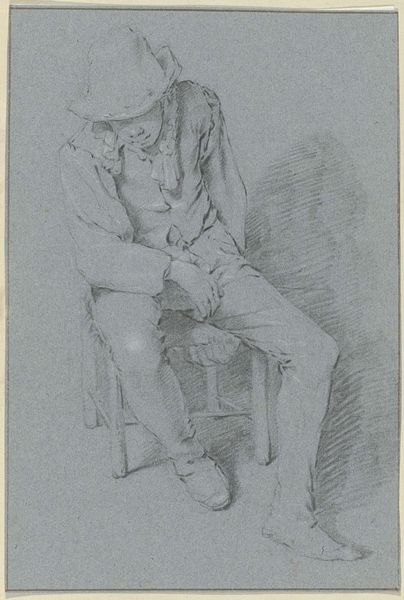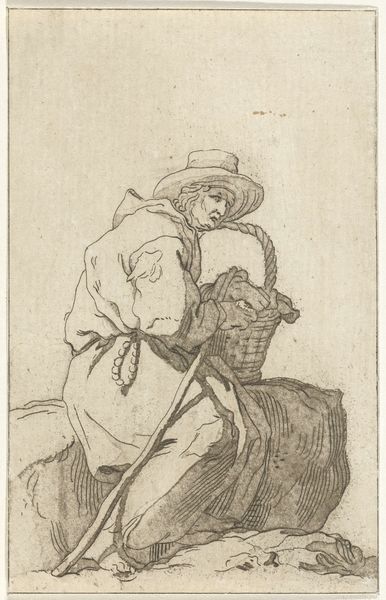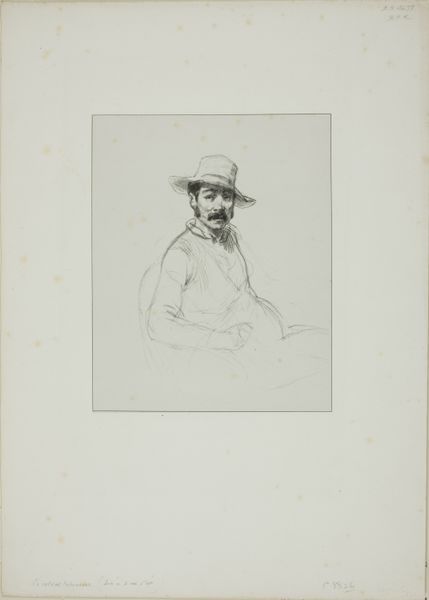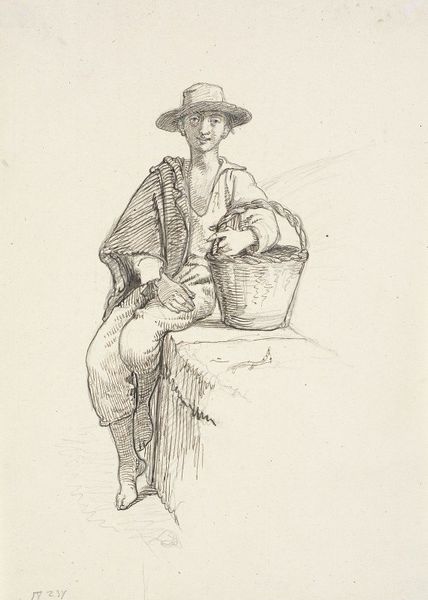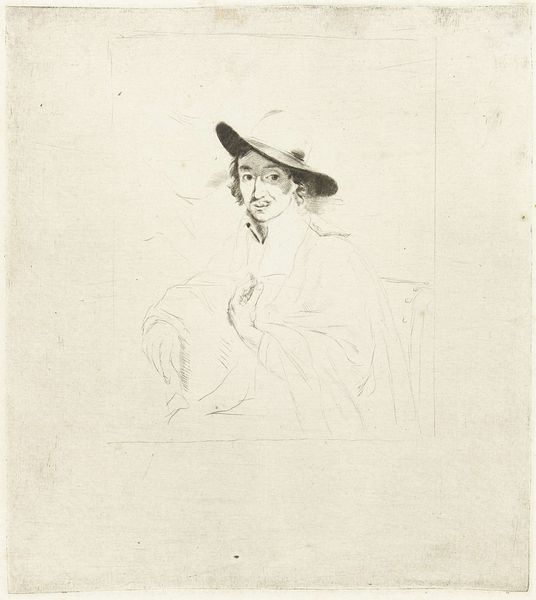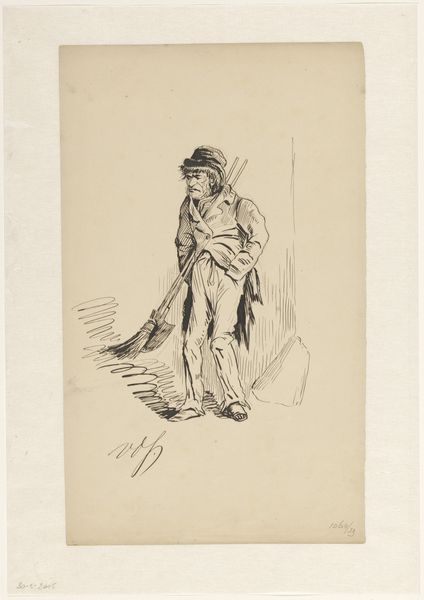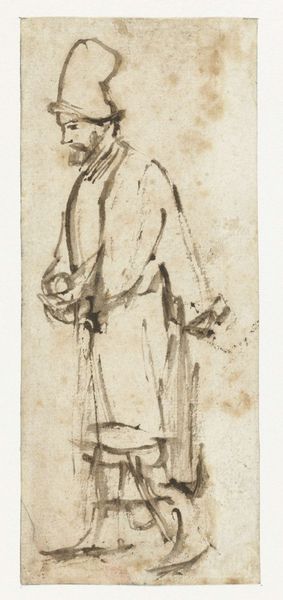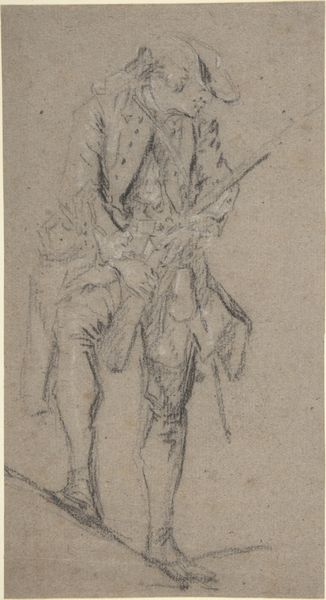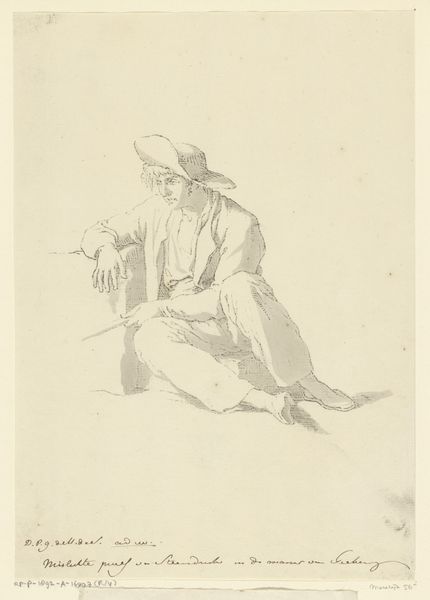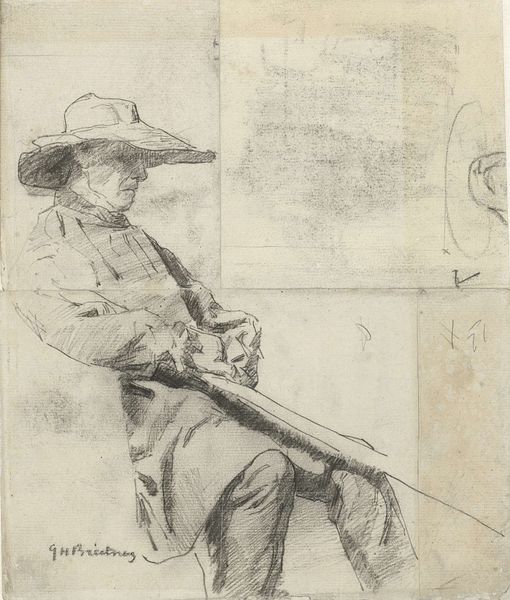
drawing, print, pencil
#
portrait
#
pencil drawn
#
drawing
#
art-nouveau
# print
#
pencil sketch
#
figuration
#
pencil drawing
#
pencil
Dimensions: plate: 39.4 x 29.8 cm (15 1/2 x 11 3/4 in.) sheet: 58 x 40 cm (22 13/16 x 15 3/4 in.)
Copyright: National Gallery of Art: CC0 1.0
Curator: I find this pencil drawing by Jacques Villon, called "Renée on a Bicycle," so compelling. It was created in 1906 and has a wonderful art nouveau sensibility. What are your initial thoughts? Editor: Well, I'm struck by its sketch-like quality. You can see the artist’s hand so clearly, the process laid bare. It feels immediate and a little raw. Curator: Indeed. Villon, along with his brothers Marcel Duchamp and Raymond Duchamp-Villon, were central figures in the Parisian art scene. They engaged with the changing urban landscape, portraying modern life. Bicycles, like trains, were transformative technologies influencing social mobility and leisure. Editor: Absolutely. And the way Villon uses pencil – seemingly almost scribbling at times – makes me consider the mass production of printed images during this period. Was this intended as a study for something more monumental, or was it conceived as a print from the start, playing with the accessibility of the medium? Curator: The ambiguity is part of its charm, isn’t it? It could have been either. What interests me is how the choice of medium reflects a deliberate move away from academic traditions. The pencil allows Villon to capture movement and a fleeting moment—the young woman gracefully poised on her bicycle, dressed in her finest and largest hat. Editor: And there's a real tension between the fluidity of the lines suggesting movement, the subject of urban life as lived through a new mobility device, and the grounded-ness of pencil as a commonplace and widely-used implement. It’s fascinating how those factors speak to the social moment through this drawing. The bicycle was becoming accessible to a broader segment of the population, so what does it mean to depict it, along with the stylish sitter, through a readily accessible medium? It blurs the line between high art and popular culture, wouldn’t you agree? Curator: Yes, completely. That democratization of both subject and method is critical to understanding Villon's place in art history. The politics of representation, of who gets to be seen, is subtly but effectively challenged here. Editor: It's given me a new appreciation for the subtle ways in which artistic choices about media, even seemingly simple choices, are underpinned by socioeconomic factors and cultural forces at large. Curator: Agreed. Thinking about those forces makes this simple sketch really resonate.
Comments
No comments
Be the first to comment and join the conversation on the ultimate creative platform.
